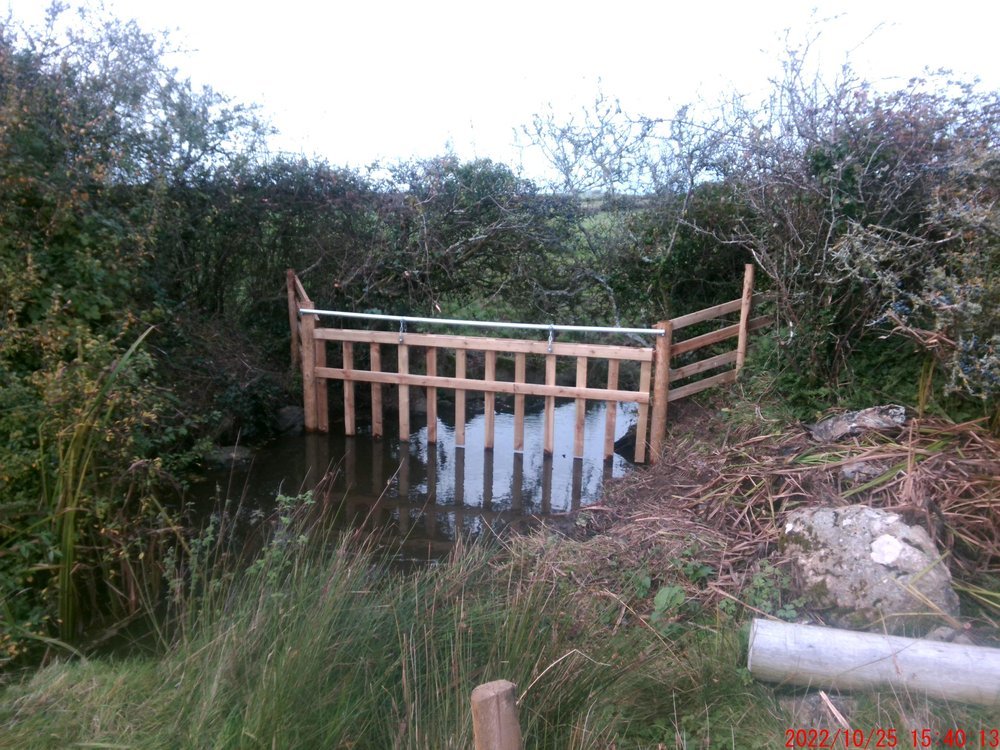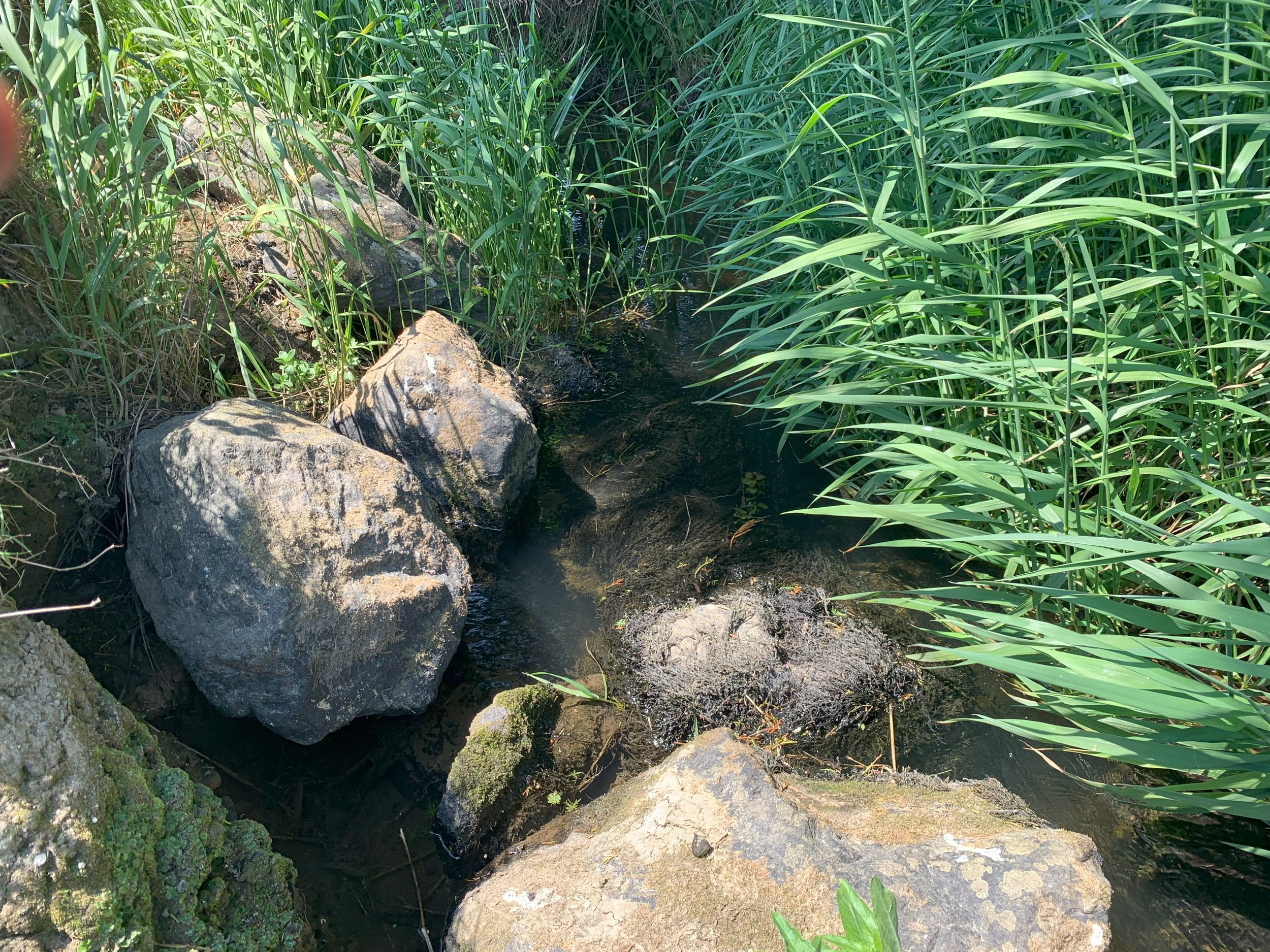Reviving the Flow: River Restoration on Ynys Mon!
The North Wales Rivers Trust has recently completed a river restoration project on the stunning island of Ynys Mon. The trust has taken a step forward in preserving and improving the ecological health of this region.
This ambitious initiative aimed to rejuvenate the local river ecosystem and enhance fish habitat through the implementation of several key restoration measures. North Wales Rivers Trust installed a series of Nature Based Solutions ( NBS), these included gravel traps, swinging gates, and the creation of in-river fish refuge and habitat.
Gravel Traps: A Foundation for Restoration
Timber gravel traps in place along the riverbed.
A vital component of the project involved the installation of four strategically placed gravel traps along the river. These traps play a pivotal role in controlling the flow of sediment and debris, preventing them from reaching downstream areas. By trapping and retaining excess sediment, the traps minimize the adverse effects of sedimentation on the riverbed and aquatic life. This restoration measure ensures the rejuvenation of the river's natural processes and creates a conducive environment for fish breeding and spawning.
Swinging Gates: Replacing Old Fencing and Enhancing Natural Processes
Before- Accumulation of debris, metal gates and fencing across the width of the river.
After: Two swinging gates now protect the river from livestock and during high flows move with the water.
To further facilitate the restoration of the river system, the North Wales Rivers Trust replaced aging fences with two innovative swinging gates. These gates not only improve the aesthetics of the area but also offer functional benefits. By redirecting the flow of water towards its natural course rather thank alternative paths due to a build up of blockages they help to restore natural meandering patterns and increase the diversity of habitats available for aquatic species. The swinging gates also play a crucial role in reducing sediment deposition and minimising the risk of bank erosion, contributing to the overall stability of the river.
In-River Fish Habitat and Refuge: Nurturing Biodiversity
In river habitat such as boulders create much needed refuge for aquatic species.
Recognising the importance of diverse fish habitats for a thriving ecosystem, the North Wales Rivers Trust implemented a strategic approach to creating in-river fish refuge. This involved the careful placement of boulders within the riverbed, mimicking natural features and providing shelter for fish populations. These refuge areas serve as sanctuaries, offering protection from predators and facilitating successful spawning and rearing of fish. By enhancing the availability of fish habitats, the project has played a crucial role in preserving and promoting biodiversity in the region.
Collaborative Conservation Efforts
The successful completion of the river restoration project on Ynys Mon would not have been possible without the collaborative efforts of Bodorgan Estate and the Welsh Governmet SMNR fund.
Looking Ahead: Sustaining the Restoration Momentum
As stewards of our natural environment, the trust remains committed to sustaining the positive momentum achieved in this project. This includes continued monitoring of the restored river system, conducting scientific research, and engaging in community outreach to promote environmental awareness and stewardship.
Conclusion:
The North Wales Rivers Trust's successful completion of the river restoration project on Ynys Mon stands as a testament to the organisation's dedication to preserving and enhancing our natural heritage. Through the installation of gravel traps, swinging gates, and the creation of in-river fish refuge, the trust has made substantial strides towards revitalising the local river ecosystem. This remarkable project not only ensures the preservation of biodiversity but also fosters a deeper appreciation for the delicate balance of nature.




